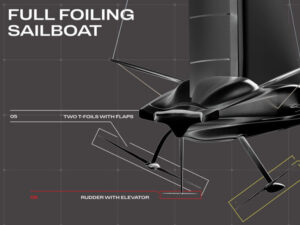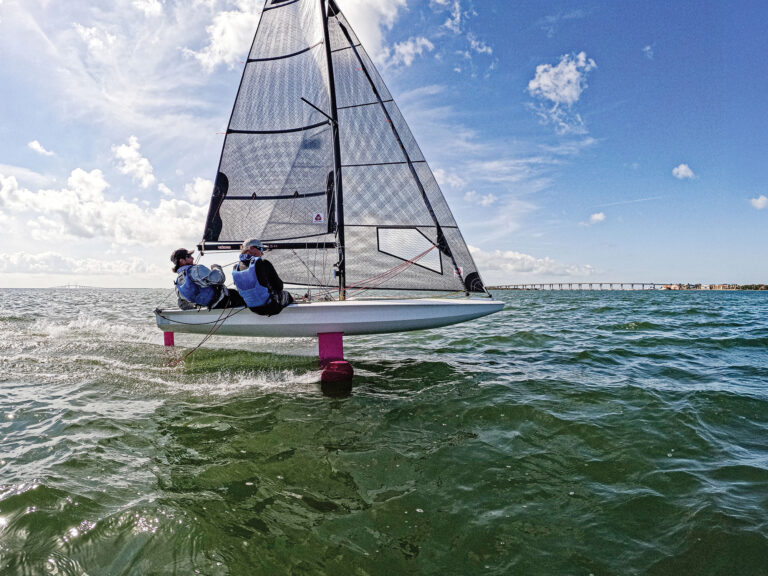“It will be a long time before I start paying somebody to steer my boat,” declared George Uznis,” skipper of Retaliation, during a heated race against a team of professional sailors. The owner of Uznis’s rival IMS racer sat quietly on the rail while his paid hands worked the boat around the racecourse. Within two years the owner was gone from competitive sailing. The game was simply not enjoyable.¶ Many stories of similarly unsatisfied owners have been told over the years, but with the implementation of owner/driver rules in many classes, such stories are becoming rare. At Acura Key West Race Week in January, all of the big-boat one-design classes featured owners steering their boats, and many of them were performing quite well in the difficult conditions. As I looked across the fleet at Key West and witnessed the high level of competition in many classes, I was excited to see that the owner/driver philosophy was encouraging more people to be on the water. The current protocol in the Farr 40, Swan 45, and TP 52 classes is for amateur owners to steer their boats and use a specified number of professionals. The owner/driver concept works for Tom Stark, of Riverside, Conn., who was in Key West racing his TP 52. Stark had campaigned a series of boats named Rush over the past 20 years, but he left sailing in 1997. “I was having a bad experience where I hired a pro to drive my boat, and I just stopped having fun,” he told me in Key West. “When the Swan 45 class started it had an owner/driver element that brought me back into the sport. It forces me to work on my own skills because I don’t want to be the weak link.” Stark’s tactician for Key West was pro sailor Ed Baird, who served mainly as an onboard coach. “Tom missed that part of life where dinghies might have been involved,” says Baird. “A big part of my job is to prepare him for what’s going to happen, keep him focused on the right thing at the right time, and help him feel he is doing a good job. I’m really just his conscience.” Craig Speck, of Newport, RI, who raced his Swan 45, Vim, in Key West has a similar philosophy. “On my boat, we keep the number one word in front, which is fun. The professionals are here to help us get better as amateur sailors.” Pro sailor and coach Ed Adams was Speck’s tactician for the week, and he too, is a fan of the owner/driver concept. “I think it has helped [sailing],” he says. “A lot of guys wouldn’t be out there if they had to steer against pros-it’s not fair in close situations.” The Farr 40 is one of the more evolved classes, and it has sustained itself through competitive owner/driver racing. Its class rules are strict when it comes to defining who can drive. Today, the Farr 40 class remains one of, if not the most competitive big-boat one-design classes in the world. The tacticians are typically top-shelf pros, and the skill level of the owners is impressive, as demonstrated by tight racing and the regular dethroning of defending world champions. Most of the 25 Farr 40s at Key West finished each race within two minutes, and overall winner, Vincent Onorato, of Italy, had a 6.2 average. Six different boats won at least one of nine races. The owner/driver philosophy is not necessarily new; it had been adhered to periodically in the America’s Cup. Professionals helmed the first 12 defenses, but in 1920, Charles Francis Adams steered Resolute to victory over Shamrock IV. There was considerable concern about the amateur Mr. Adams’ ability at the time, but he finished the job with a thin 3-2 victory. Adams’s performance inspired Harold “Mike” Vanderbilt to steer his own J-boats during three successful defenses in the 1930s. The 12-Meter era was an amateur event until the arrival of Dennis Conner. Today, the America’s Cup is the realm of professional sailors, but I’m sure that amateur owners Larry Ellison, the man backing BMW Oracle, and Ernesto Bertarelli, of Alinghi, would rather steer than support from secondary roles. In the 1980s, the Maxi class thrived when owners were required to steer during the start and the first leg. Yet, when the class shifted back to pro drivers, participation faded. There’s a lesson here. “The owner/driver concept is a good thing,” says Stark. “It is a real change in the sport after the demise of the Corel 45, the 1D48, and the IMS 50 classes.” But not every owner likes having pros on board. J/109 skipper John Halbert, who also raced at Key West and whose class is strictly owner/driver, has his own protocol. “There is a little bit of rock star attitude that you get with professional sailors that you don’t get with amateurs,” says Halbert. “I actually prefer the amateurs.” Yet another example of the owner/driver concept taking hold is the strong interest in the New York YC’s Swan 42 class. A group of owners recently spent a full day hashing out the class philosophy, and they agreed that only one paid crew could race on the boat, but not steer. In fact, only owners will be allowed at the helm. At this writing, 36 of the boats had been ordered. One could argue that the owner/driver concept will diminish professional sailing, but there are many disciplines available at the upper levels of the sport to support the pros. Many of them are also finding themselves coaching more and crewing for thriving owner/driver classes. As I listen to the renewed enthusiasm among owners, I think about the difference in skill sets between the amateur and professional drivers, which Baird says is “often small” because many pros get into a specialty. Adams explains the difference: “Mostly it comes down to attitude. Pros work longer hours. And the amateurs are into fun. Amateurs are just as good when it comes down to it.” In their supporting roles, however, pros need to be careful not to be too verbally heavy-handed. Baird is discreet with his guidance. “We feed Tom information that helps him realize he is doing stuff correctly,” he says. “If he gets out of a groove we just ease him back into the good mode again.” On Vim, Adams calls tactics while Speck listens to trimmer “Moose” McClintock. “They work together with constant conversation,” says Adams. The positive result of this emphasis on the owner/driver philosophy is that we are seeing more amateurs and pros having fun as they work side by side for a common competitive goal, learning and feeding off each other. This is critical for the health of the sport because while the owners make things happen, they also need to be important members of the team.









